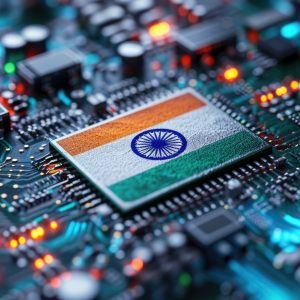
The truth can be painful. Yet it is, paradoxically, the only way to personal and social peace in Argentina—a country seriously marred by its own history.
No matter how much it cleans up its act, it seems like Argentina just can’t manage to scrub out the stains of the “Dirty War” that ravaged the country from 1973 to 1978. Even after a wave of presidential pardons and truth commissions in the early 1990s, trials continue to seek justice for crimes against humanity. The most recent decision came out on October 24th, when fifteen individuals associated with La Cacha prison, a detention and torture center outside of La Plata, received sentences for kidnapping, murder, and torture – ranging from life in prison to only 12 years. Indicted were former Buenos Aires police chief Miguel Etchecolatz, ex-Interior Minister Jaime Lamont Smart, as well as many others.
Transitional justice continues to be delivered intermittently in modern Argentina through trials and, previously, the truth commission CONADEP. These hearings attempt to compensate for a several decades old conflict during which thousands of young, left wing activists disappeared, infamously entering history books as the desaparecidos. Most were, presumably, victims of mass murder: annihilated with dynamite, buried alive in mass graves, or tossed unconsciously from airplanes in the mid-Atlantic in “death flights” administered by the conservative, junta government. The infamous junta regime was led by Jorge Rafael Videla, commander of the Argentine military and engineer of the coup d’etat that suspended Argentine democracy and initiated grotesque crimes against humanity that tarnished Argentina’s international reputation.
Yet, decades after the restoration of democratic rule, it remains to be seen if the continued delivery of justice serves to actually strengthen Argentina’s sense of accountability for past abuse, or to exacerbate inequality in the country by deepening the collective memories and tensions of those on the left and the right of the dispute. For some, the memory of the Dirty War perpetuates class conflict as much as the violence itself did, once again pitting the right against the left. For others, it remains no more than a painful lesson in psychological resistance and democratic reform.
A study by University of Utrecht scholar Floor Ketting argues that people of varying socioeconomic backgrounds, specifically the people of the shantytown Villa 31, and the high-end, wealthy neighborhood of Retiro, maintain different perceptions about what occurred during the Dirty War. This has much to do with the fact that the military presence in Retiro is still substantial, and that some, though not all of the military—as many received pardons in 1989-1990—recognize the Dirty War’s interminable effect on Argentina. One example of this remorse within the military is evidenced by Navy Captain Francisco Scilingo’s haunting recount of his participation in the systematic killing of leftists. This produces an interesting divide between collective and conflictive memory. Because not all shared in the trauma and psychological stress of the Dirty War in the same way—or, in some cases, at all—Argentina is hardly united by a repudiation of its shadowy past.
Furthermore, compensation to surviving family members of those butchered, many of who come from low-income communities such as Villa 31, has been few and far between. Survivors like Elsa Osterheld, interviewed for a New York Times piece in 2002, continue to suffer from the loss of loved ones without receiving financial reparations from the state. Prior guarantees of sizable reconciliation packages, with some even promising up to $256,000 USD have proven hollow and the “aging retirees” that survived the conflict at the expense of their children, many of whom continue to fight for justice as members of the Madres de la Plaza de Mayo, must bear the burden of financial strain as well as the pain, loss, and humiliation associated with the widespread pardons granted to military members in the 1990s under the premise that they were merely “following orders.” That class conflict and misunderstandings about the nature of the Dirty War persist in the present thus hardly comes as a surprise.
Regardless of conflict, the unbearable truths of this dark period in Argentine history cast a long psychological shadow on a country increasingly plagued by debt, international pressure, and a statist government tightening its control on media and speech. 130 witnesses bore the burden of testifying in the La Cacha prison trial, recounting crimes ranging from blindfolding and group rape to baby stealing, systemic psychological deterioration through verbal abuse and torture, and mass murder.
Yet despite the pain and class tensions incited by the continuing trials and convictions of junta military criminals, the trials shall—and must—go on. Increasing state action against those initially pardoned by the post-junta regime has encouraged civilians who bore witness to Argentina’s terrible crimes to come forth and speak out, providing testimonies that have at times led to forensic evidence and, most crucially closure for distraught families and survivors.
The stain of the Dirty War is deep and perhaps unable to be removed. Yet despite the pain, the past cannot be forgotten, lest the desaparecidos disappear for good. It is a stain worth wearing solemnly, and with respect for the ideals of the 30,000 innocent civilians whose blood has made it so irremovable.





Be First to Comment